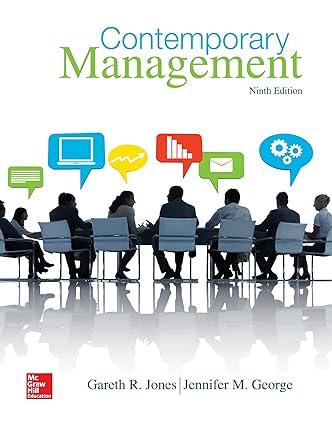Question
TechMerge Inc., a mid-sized software development company, recently merged with a smaller tech start-up, Code Innovate. Following the merger, the teams from both companies were
TechMerge Inc., a mid-sized software development company, recently merged with a smaller tech start-up, Code Innovate. Following the merger, the teams from both companies were integrated to work on a collaborative project aimed at developing a new project management tool.
The Challenge:
Within a few weeks of collaboration, significant communication issues arose between the two teams. The Tech Merge team, accustomed to a formal and hierarchical communication style, clashed with the more informal and direct approach of the Code Innovate team. Misunderstandings frequently occurred during team meetings and email exchanges, leading to delays in project milestones and growing frustration among team members.
Key issues included:
1. Cultural Differences in Communication: The TechMerge team had a longstanding culture of formal and hierarchical communication, which often involved detailed reports and scheduled meetings. In contrast, the CodeInnovate team thrived on an informal, agile communication style, preferring quick stand-ups and spontaneous problem-solving sessions. This disparity led to frustration on both sides, with each team feeling that their communication style was either too rigid or too lax.
2. Email Miscommunication: Email became a significant source of conflict. The TechMerge team's emails were often lengthy and formal, which CodeInnovate team members found cumbersome and time-consuming. On the other hand, the brief and to-the-point emails from the CodeInnovate team were sometimes perceived as curt or dismissive by the TechMerge team. This led to misunderstandings and assumptions about the tone and intent behind written communications.
3. Meeting Dynamics: During joint team meetings, the differences in communication styles were starkly evident. The TechMerge team members were used to structured meetings with a clear agenda and predefined speaking order, while the CodeInnovate team preferred a more open and free-flowing discussion format. This led to meetings where some team members felt unheard or overwhelmed, resulting in inefficient meetings and unresolved issues.
4. Adaptation to Change: The TechMerge team, being part of a larger, more established company, was accustomed to a slower pace of change and decision-making. The CodeInnovate team, coming from a startup environment, was used to rapid decision-making and a high tolerance for change. This difference in pace led to frustration, with each team feeling either rushed or stalled.
5. Feedback and Conflict Resolution: Feedback sessions and conflict resolution attempts often exacerbated tensions. The direct and blunt approach of the CodeInnovate team clashed with the more formal and indirect approach of the TechMerge team. Misinterpretations of feedback led to defensive attitudes, further hindering effective communication and collaboration.
6. Integration of Work Processes: The differing work processes and methodologies of the two teams led to confusion and inefficiency. There was a lack of clarity on project management protocols, decision-making processes, and responsibility delineation, causing delays in project milestones
The situation escalated when an important deadline was missed. An email from a TechMerge team leader, intended to be instructive, was perceived as condescending by CodeInnovate members. This led to an open conflict during a team meeting, with accusations of unprofessionalism and disrespect.
The cumulative effect of these communication challenges was a decline in team morale, delays in project delivery, and a growing sense of frustration and distrust between the members of the two teams. The situation called for immediate attention and strategic interventions to bridge the communication gap and foster a more cohesive and productive work environment.
Analyze this case study focusing on the following aspects:
1. Identify the specific communication barriers based on the incident and the background provided. (5 Marks)
2. Analyze how differences in organizational culture and communication styles contributed to the issues. (5 Marks)
3. Propose strategies and solutions to overcome these communication challenges and prevent similar incidents in the future. (10 Marks)
Instructions:
• Your analysis should be comprehensive, demonstrating a clear understanding of the case study and the communication issues it presents.
• Be specific in your identification and analysis of the problems, and ensure that your proposed solutions are realistic and feasible within the given context.
• Support your arguments with relevant theories and examples.
Step by Step Solution
There are 3 Steps involved in it
Step: 1
1 Identify the Specific Communication Barriers a Cultural Differences TechMerges formal and hierarchical style clashed with CodeInnovates informal and agile approach Resulted in frustration misunderst...
Get Instant Access to Expert-Tailored Solutions
See step-by-step solutions with expert insights and AI powered tools for academic success
Step: 2

Step: 3

Ace Your Homework with AI
Get the answers you need in no time with our AI-driven, step-by-step assistance
Get Started


